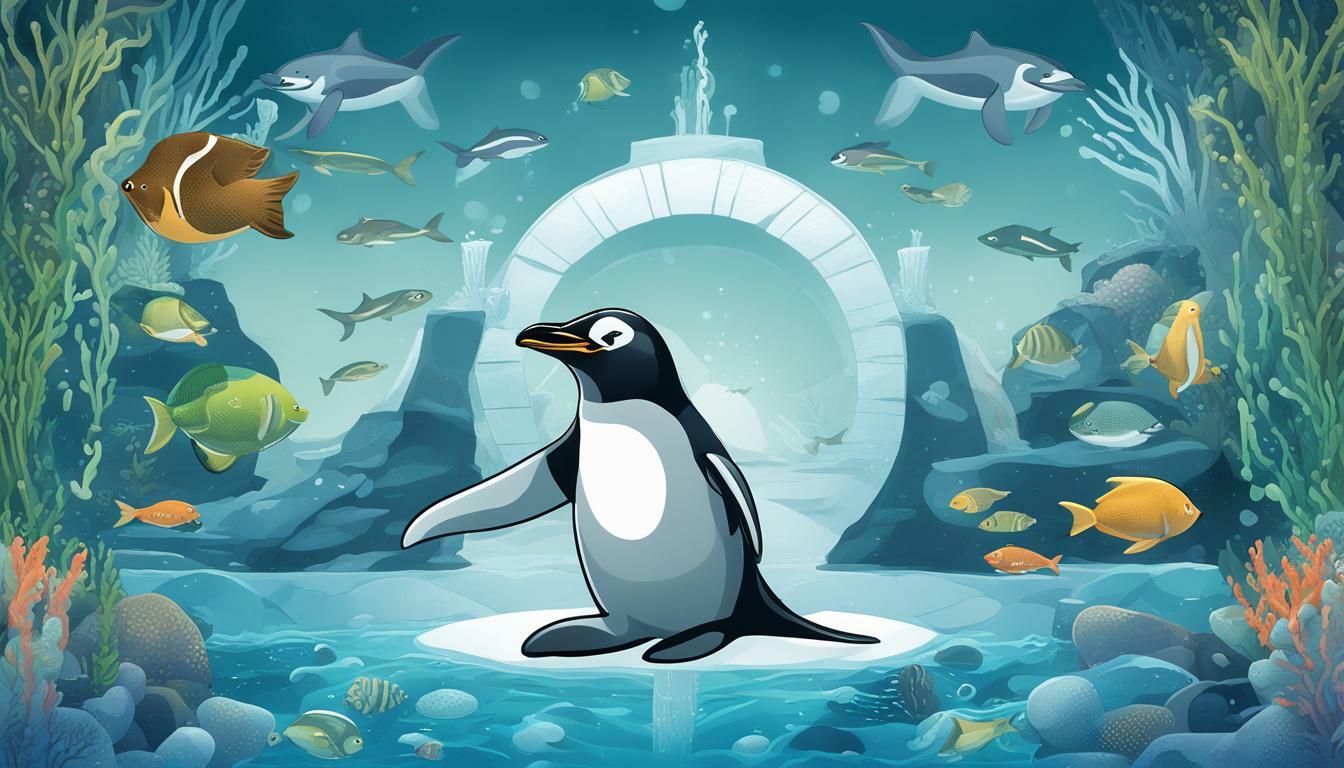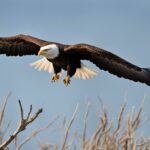The natural world is full of fascinating interactions between different species. One such relationship that has caught the attention of scientists and nature enthusiasts alike is the one between seals and penguins. While seals are known to be formidable predators, and penguins are cute and cuddly creatures, the question remains: do seals eat penguins?
Understanding the predator-prey relationship between seals and penguins is crucial to gaining insights into the wider context of Antarctic marine life. In this article, we will delve into the diet of seals and penguins, examine their interactions, and explore the evidence surrounding the consumption of penguins by seals.
Key Takeaways:
- Seals and penguins coexist in the same ecosystem, with the former being a predator and the latter being prey.
- Understanding seal hunting habits and penguin feeding behavior is essential to determining whether seals eat penguins.
- The relationship between seals and penguins is complex, with both species playing important roles in the Antarctic marine life.
The Diet of Seals
Seals are carnivorous marine mammals that primarily feed on fish, krill, squid, and other small sea creatures. However, their diets can vary depending on the species of seal and their location in the Antarctic marine life ecosystem. For instance, the leopard seal is known to consume penguins, while the crabeater seal’s diet is composed primarily of krill.
Seals tend to be opportunistic feeders, meaning they select prey based on their availability and convenience. They are capable of submerging themselves for long periods, allowing them to hunt for food in deep waters. Seals are also well-adapted to hunting in harsh and icy conditions, enabling them to capture prey in challenging environments.
Despite their diverse diets, seals have certain food preferences. For example, Weddell seals prefer to eat fish and squid, while Antarctic fur seals are partial to krill. The type of food that seals consume can affect their overall health and survival, making the study of their diets an important aspect of understanding these marine creatures.
Penguin Feeding Behavior
If you’re wondering whether seals eat penguins, it’s important to understand the feeding behavior of these flightless birds. Penguins are known for their unique hunting strategies, which are well-suited to their underwater lifestyle.
These birds are primarily fish-eaters and feed on a variety of small marine creatures such as krill, squid, and crustaceans. They have powerful beaks that are sharp and serrated, which helps them catch and hold onto their prey.
Penguins are capable of diving to depths of up to 500 feet to find food. They can hold their breath for several minutes and swim at impressive speeds, enabling them to chase down their prey.
However, penguins aren’t the only ones with hunting skills in the Antarctic marine life. Seals are also formidable predators and are capable of catching a wide variety of prey, including fish, squid, and crustaceans.
So, do seals eat penguins? Keep reading to find out more about the interaction between these two species.
Seal and Penguin Interactions
The interactions between seals and penguins are complex and dynamic, shaped by their predator-prey relationship and their shared habitat in the Antarctic marine life. While seals are known to hunt and consume penguins, the extent to which this happens is not straightforward.
Seals and penguins have evolved to coexist in the same environment, adapting over time to each other’s presence and behaviors. Penguins have developed strategies to avoid being preyed upon by seals, such as forming groups and huddling together for protection, hiding in crevices, or jumping out of the water when a seal approaches.
Seals, on the other hand, have different hunting habits depending on their species, with some preferring to hunt in shallow waters and others diving deep to catch their prey. They are known to target penguins when other food sources are scarce, or when they are in the vicinity of penguin colonies.
The relationship between seals and penguins is not purely one-sided, either. Penguins have been observed stealing food from seals, while some seal species have been known to avoid penguins altogether. The complexity of their interactions adds to the richness and diversity of the Antarctic ecosystem.
Understanding the predator-prey relationship between seals and penguins is crucial for conserving the delicate balance of the Antarctic environment. While seals may consume penguins as part of their diet, this does not necessarily mean that it has a significant impact on penguin populations. The intricacies of these interactions defy simple explanations, highlighting the need for ongoing research and monitoring to ensure the sustainability of Antarctic marine life.
Seal Hunting Habits
Seals are known for their adept hunting skills, which they have honed over millions of years of evolution. Their hunting habits are crucial to their survival in the harsh and competitive Antarctic marine ecosystem.
Seals are opportunistic hunters and will typically target prey that is easy to catch. They use their excellent swimming ability to move quickly and efficiently through the water, stalking their prey and using surprise to catch it off-guard.
Seals have a preference for fish and krill, which are abundant in the Antarctic waters. They are also known to eat squid and other invertebrates. When hunting, seals will often dive deep into the water to catch their prey, holding their breath for several minutes if necessary.
Seals are apex predators in their ecosystem, meaning they have few natural enemies. However, they do have to contend with other predators, such as killer whales and leopard seals, who may compete with them for food.
While seals are skilled hunters, they are not indiscriminate and will not target just any prey. They are selective in their hunting habits and will focus on prey that is most abundant and easiest to catch. In the case of penguins, seals may or may not see them as a viable food source, depending on factors such as the abundance of other prey in the area and the specific feeding habits of the seal in question.
Understanding seal hunting habits is important in evaluating the potential for interaction between seals and other species in the Antarctic marine ecosystem, including penguins.
Penguin Consumption by Seals
One of the most fascinating questions about Antarctic marine life is whether seals really eat penguins. While both seals and penguins coexist in the same ecosystem, they also share a predator-prey relationship that has evolved over time.
Seals, like many other species, have a varied diet that includes krill, fish, and squid. However, they have also been known to consume birds and other marine mammals, leading to the speculation that they may also target penguins as a food source.
Research has shown that while seals have been observed preying on penguins, it is not a regular occurrence. In fact, penguins make up a relatively small part of a seal’s diet, with studies estimating that only 2% to 5% of seals’ food consumption consists of penguins.
This relatively low level of penguin consumption can be attributed to a number of factors. First, seals have a varied diet and can easily find other sources of food. Second, penguins have evolved to be fast swimmers and agile on land, making it difficult for seals to catch them. Finally, seals may also be deterred from consuming penguins due to the high concentration of uric acid in penguin flesh, which can cause illness in seals if consumed in large amounts.
Despite these factors, seals and penguins remain in a predator-prey relationship, with seals always on the lookout for potential food sources. Further research is needed to fully understand the intricate interactions between these two species and their role in the wider context of Antarctic marine life.
Conclusion
In conclusion, the relationship between seals and penguins is complex and multifaceted. While seals are known to be predators of penguins, their consumption of these birds is not as frequent or significant as some may assume. Seals have a diverse diet and typically feed on fish and krill, with penguins serving as a rare and occasional meal. Understanding the predator-prey relationship between seals and penguins is crucial for gaining insights into the wider context of Antarctic marine life. By examining the hunting habits and food preferences of these species, we can appreciate the delicate balance of the ecosystem and the intricate connections between different organisms. In summary, while seals have been known to consume penguins at times, it is important to recognize the wider range of prey that they target. The relationship between seals and penguins is just one aspect of the fascinating and complex world of Antarctic marine life.Do Penguins Have Fur to Protect Them from Seals?
Scientists have long sought to uncover the truth about penguins and their unique adaptations. Despite penguins’ close encounters with seals in their Antarctic habitat, it is interesting to note that these fascinating creatures do not rely on fur for protection. Instead, their feathers, waterproof and densely layered, provide insulation and safeguard them from the icy waters, allowing penguins to thrive in their icy homes.
FAQ
Q: Do seals eat penguins?
A: Seals are known to consume penguins as part of their diet, although it may vary depending on the species of seal and the availability of other prey. Penguins are considered a potential food source for certain seal species in their natural habitat.
Q: What types of food do seals typically consume?
A: Seals have a varied diet that includes fish, squid, krill, and other marine organisms. They are opportunistic feeders and will consume whatever prey is abundant and accessible in their environment.
Q: How do penguins find and catch their food?
A: Penguins are skilled hunters in the water. They use their streamlined bodies and strong flippers to swim and chase their prey. They primarily feed on fish and krill, which they catch by diving deep into the ocean.
Q: How do seals and penguins interact in their natural habitat?
A: Seals and penguins have a predator-prey relationship, where seals hunt penguins as potential food sources. However, it is important to note that not all seals target penguins, and the dynamics of their interactions vary depending on factors such as species, location, and food availability.
Q: What are the hunting habits of seals?
A: Seals employ various hunting strategies, including ambushing their prey from underwater, chasing and catching fast-swimming fish, and using their sharp teeth and powerful jaws to capture and consume their food. Their hunting habits are adapted to their marine environment.
Q: Is there scientific evidence of seals consuming penguins?
A: Yes, scientific studies have documented instances of seals consuming penguins. However, the extent to which seals rely on penguins as a food source can vary. It is important to consider the specific species of seal and the availability of other prey in the environment.










